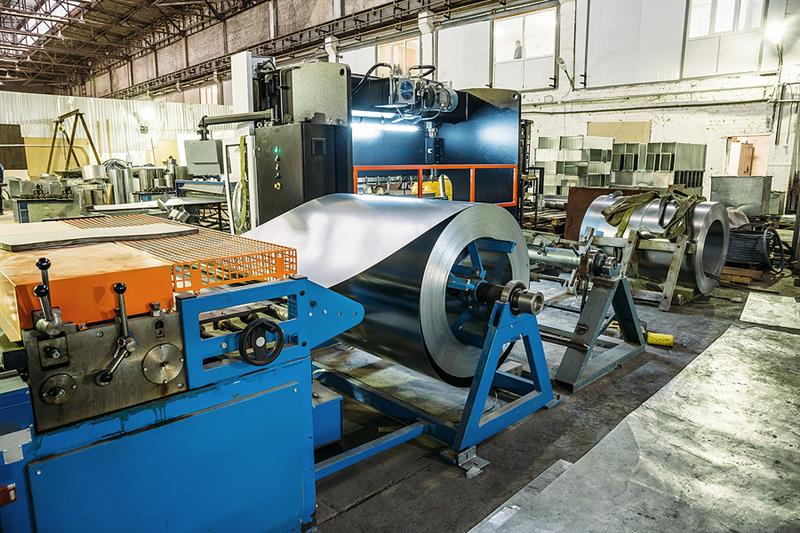Steel Tariffs Fuel Price Surge; Construction Starts Decline
by Christopher Brinckerhoff | 3 March 2025 6:00 am
 [1]
[1]According to an analysis by Associated General Contractors of America (AGC)[2], steel prices continue to rise sharply. On February 27, AGC received information from a reader of the association’s Data Digest newsletter regarding steel price increases announced in January and February: steel tube up $350 per ton (four increases); steel plate, $200 (two increases); rebar, $70 (two increases); merchants, $60.
Timna Tanners, investment analyst of Wolfe Research, based in New York City, wrote on February 27, “Mills have been reluctant so far to ramp up capacity, instead hiking prices 30 percent from lows before tariffs were announced.”
In a separate note to investors regarding President Donald Trump’s announced restored 25 percent tariffs on all steel imports, Tanners wrote, “Panic buying ahead of the March 12 effective date has helped boost [hot rolled coil to around $840 per short ton (st), per price reporting firm CRU], up from January lows at $680/st, with some mills already at $900/st.
The market for manufacturing construction is evolving. Eli Lilly and Co.[3], based in Indianapolis, announced plans on February 27 to build “four new pharmaceutical manufacturing sites in the United States. This brings the company’s total U.S. capital expansion commitments to more than $50 billion since 2020.”
Dan Gallagher, columnist at the Wall Street Journal[4], wrote on February 25, “Apple announced plans [Feb. 24] morning to spend more than $500 billion in the U.S. over the next four years. The outlay will include money spent with domestic suppliers and on the opening of a manufacturing facility to produce the servers needed to support the company’s artificial intelligence service, called Apple Intelligence. The company also said it plans to open a facility in Detroit to train ‘the next generation of U.S. manufacturers.’ Unclear, though, is how much of the planned spending is actually new. Apple has spent about $1.1 trillion over the past four fiscal years on total operating expenses and capital expenditures—and Wall Street expects nearly $1.3 trillion in total spending over the next four years, according to consensus estimates by Visible Alpha.”
In contrast, Air Products[5], based in Allentown, Pa., on February 24 announced the company will exit three U.S.-based projects: a sustainable aviation fuel expansion project in Paramount, Calif.; a facility to produce green liquid hydrogen in Massena, N.Y.; and a project in Texas for the production of carbon monoxide.
Two reports show a decline in construction starts in January. Michael Guckes, chief economist at ConstructConnect[6], says in a release posted on February 25, “Total construction in January… was more than 30 percent below the same level from the previous January,” with residential down 39 percent, nonresidential building down 36 percent, and civil down 16 percent.
Total construction starts decreased 6 percent in January at a seasonally adjusted annual rate, Dodge Construction Network[7] reported on February 21, with nonresidential building down 18 percent, residential down 1 percent, and nonbuilding up 4 percent. On a year-over-year basis, total construction starts were down 6 percent from January 2024, with nonresidential down 22 percent, residential down 2 percent, and nonbuilding up 17 percent.
For the 12 months ending in January, total construction starts were up 4 percent from the same time prior to January 2024. Residential starts were up 5 percent, nonresidential starts were flat, and nonbuilding starts rose 7 percent.
Sarah Martin, associate director of forecasting at Dodge Construction Network, says, “After robust data center starts in November and December, total office starts fell back in January to more historically typical levels and drove a sizable piece of the month-to-month decline. However, most nonresidential sectors saw weakness over the month. Ongoing labor shortages and high material costs will continue to pose risks to the sector, along with concerns over tariffs and stricter immigration enforcement. Projects are likely to continue moving through the planning queue slowly until the Federal Reserve resumes cutting rates in the back half of the year.”
Key dates regarding tariffs are (as of Feb. 27):
- Feb. 4: 10 percent tariffs on China in effect.
- March 4: 25 percent tariffs on Canada and Mexico scheduled to go into effect.
- March 4: Additional 10 percent tariffs scheduled to go into effect.
- March 12: Section 232 tariffs of 25 percent on all imported steel and aluminum (and possibly copper, pending an investigation by the United States Department of Commerce) scheduled to go into effect.
- April 2: Studies on reciprocal tariffs due to an order from President Trump (reciprocal tariffs to match taxes on United States firms).
- April 2: 25 percent tariffs on imported cars and trucks announced.
- April: Under consideration are possible 25 percent tariffs on lumber and wood products.
- [Image]: https://www.metalconstructionnews.com/wp-content/uploads/2025/03/bigstock-219058402.jpg
- Associated General Contractors of America (AGC): https://www.agc.org/sites/default/files/users/user21902/datadigest20250228.pdf
- Eli Lilly and Co.: https://investor.lilly.com/news-releases/news-release-details/lilly-plans-more-double-us-manufacturing-investment-2020
- Wall Street Journal: https://www.wsj.com/tech/apples-500-billion-is-mostly-already-in-the-books-7cc7123e?mod=Searchresults_pos2&page=1
- Air Products: https://www.airproducts.com/company/news-center/2025/02/0224-air-products-to-exit-three-us-based-projects
- ConstructConnect: https://www.constructconnect.com/construction-economic-news/january-2025-total-us-construction-starts-fall-1.5-outlook-remains-optimistic
- Dodge Construction Network: https://www.construction.com/company-news/construction-starts-fall-back-6-in-january/
Source URL: https://www.metalconstructionnews.com/news/industry-news/steel-tariff-cost/